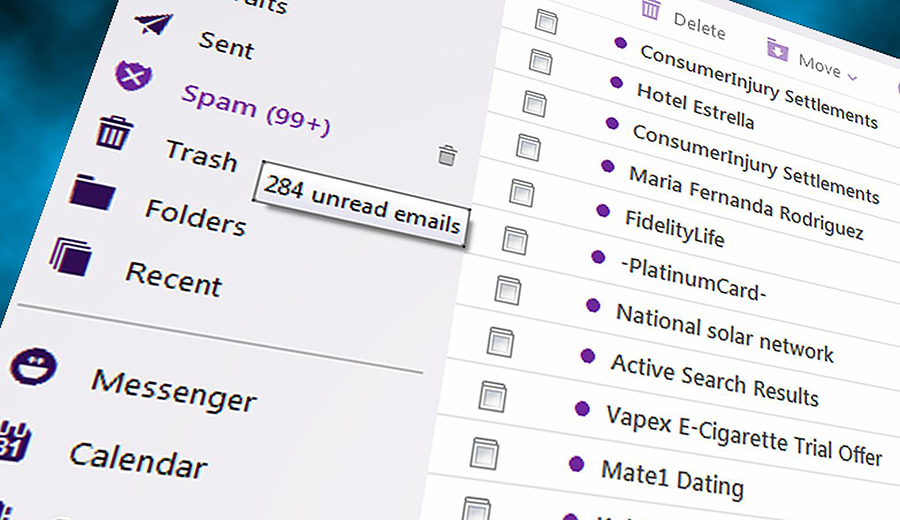News & Events
Writing an Effective Email
Writing an Effective Email
By: Melanie Bryant

Photo by Pexels
Once you’ve been hired and you’re sending information to your supervisors and coworkers, good email communication skills can help you rise up the career ladder.
Email History
In the days before the internet, computer programmer Ray Tomlinson invented a way to send messages to specific computers. In the late 1960s, the US Government commissioned an networked computer system called ARPANET. Tomlinson worked on this system and developed a way to send messages to specific users on the ARPANET system. According to Wikipedia, at first his system was a personal project. Tomlinson went so far as to say “Don’t tell anyone! This isn’t what we’re supposed to be working on.”
When the internet started to be available to the general public, starting with CompuServe in 1989, email came with it. At first, users could only send email to those on the same network system, but that changed in the early 1990s. At first, email was provided by your ISP. HotMail was developed in 1996 and was one of the first ways to send email that was not tied to an individuals ISP. Since then, web based email has grown and allowed both professionals and individuals to communicate instantaneously. In fact, in 2019 there were almost 4 billion email users worldwide.
How Email Works

Photo by Pexels
Email uses something called asynchronous communication. This is a type of communication that does not happen in “real-time”. For example, a text message, a tweet, a sticky note on the fridge, and a letter sent through the mail are all examples of asynchronous communication. An asynchronous communication is able to “wait” until the other person is ready to receive it. Email is sent by the user and then stored on the computer until the recipient is ready to read it. It’s great for conversations that are not time sensitive.
On the other hand, synchronous communication happens in real time. A live, in-person conversation, a zoom meeting, or a telephone call are good examples of a synchronous communication. Synchronous communication happens immediately and is does not “wait around” for the recipient. Some network traffic between computers is also considered synchronous communication because it happens instantaneously.
Why Learn to Write an Effective Email?

Photo by Morguefile
Email has many benefits as a communications tool:
It’s used everywhere: In fact, 85% of all adult internet users use email on a daily basis. In 2020 the average office worker receives around 120 email per day.
It’s unobtrusive: Because email is asynchronous, it can be sent to a co-worker without interrupting their work. This makes it ideal for questions, feedback, collaboration, or other messages that are not time sensitive.
It’s recorded: Email is a great way to ensure communication is recorded. Synchronous communication can be forgotten if the recipient does not take notes. An email exists on the server as a perfect record of the words used.
It’s organized: Email can easily be saved into folders for later reference. It’s a great way to organize content and communication you might need in the future, but won’t need frequently. Items such as meeting minutes, policy updates, procedures, etc. can be easily saved and read back later on.
Email is worldwide: Email can be sent to anyone in any country.
Open 24/7: Email can be sent and read at any time during the day or night and in any time zone across the world.
It’s fast: Although the recipient might not respond right away, email only takes a few seconds to send to anyone in the world.
Cheap: Email is cheaper, faster, and more reliable than paper communication.
To achieve success in business, one of the most important skills is to learn how to communicate your ideas effectively and concisely. It might be as simple as an announcement about a co-worker’s birthday or as complex as a contract proposition, but writing email is essential to today’s professional occupation.
What Makes an Effective Email?

Photo by Unsplash
The average professional sends around 40 emails per day. If each email takes 4 1/2 minutes to write, that means you’ll be spending around 3 hours a day sending emails. By making your emails short, efficient, and direct you’ll save both your own and your coworkers time.
Parts of an Email
An email can be broken up into 7 main parts
- To: The person who is receiving the email
- CC / BCC: Additional people who are receiving the email
- Subject: A short line of text that can be seen in the recipient’s inbox
- Greeting: An opening where you specify who the email is for
- Message: The information you are conveying in your email
- Closing: A word or phrase that indicates the message is complete
- Signature: Your name and contact information
Writing an Effective Email: To
The To: field should contain the email address of the person or persons that are addressed in the message. This field may contain multiple email addresses. As a general rule, if you intended someone to read and respond to the email their address should go into the To: field. Everyone who receives the email will be able to see the addresses present in the To: field.
Writing an Effective Email: CC/BCC
Similar to the To field, the Carbon Copy (CC:) and Blind Carbon Copy (BCC:) fields are used to specify email addresses that will receive the email you are sending.
The CC: field is intended for people who might be interested in the email’s contents but are not directly affected by the message. It’s used as a way to “keep people in the loop.” For example, you might send a message to a co-worker and CC your supervisor or another colleague to let them know the matter is being addressed. Everyone who receives the email can see the email addresses in the CC: field.
The BCC: field is identical to the CC: field except for one crucial difference. When the email is sent the email addresses included in the BCC: field are not shown. The intent of BCC: is so that you can send an email to multiple people without them knowing who else the email has been sent to. It’s ideal when the email list is long or if you don’t want to expose who else is receiving the email.
Writing an Effective Email: Subject
Your subject line should alert the recipient to the contents of the email. An effective subject line allows the receiver to prioritize and organize messages based on importance. Consequently, you should never use the word ‘urgent’ in the subject line unless the matter is indeed, urgent.
Writing an Effective Email: Greeting
The greeting is the part of the email where you directly address the intended recipient or recipients of the email. While there are multiple ways you can address an email, it’s best to stick to one of these common formats:
Hi [Name] – Useful as an all around greeting in most situations
Good Morning [Name] – An alternative to “Hi” that makes the email feel more personalized but can also feel more formal. Replace Good Morning with Good Afternoon when appropriate.
Dear [Name] – Best as a very formal greeting and should be used in first contact business communication when addressing a person in a position of respect. Use Ms./Mr. Lastname when you know the gender and a full name when you don’t. You should also incorporate military rank or other honorific such as Dr. when appropriate.
Hello Everyone – A good choice when you have multiple people in the To: field
Writing an Effective Email: Message
Repeat yourself in the first sentence: Use the first sentence of the email to restate the subject line and to add any other important information that the reader needs.
Chunk your message: Chunking is a technique that improves readability by breaking the text into small, easy to digest bits of information. Write in the active voice; use simple sentences and short paragraphs to keep the reader moving through the email and processing the information.
Make your point: You can achieve more by using bullet points and enumerated lists than with sentences. While drafting your message, think carefully about what points are important for your reader to remember and then use bullet points to highlight and draw the reader’s attention to the information.
Inspect what you expect: Before hitting the send button, take a few minutes to carefully proofread your email. Reread your message to ensure that it makes sense and that you have conveyed the information concisely. Don’t forget to double-check attachments—especially to make sure you have attached the right files.
Writing an Effective Email: Closing
The closing is the part of the email where you indicate that the message has completed. Like the greeting, the closing is best when it is simple. Stick to one of these common formats:
Sincerely – Use this one in formal situations like when sending a resume to a prospective employer
Regards – Simple and classic. Useful for most professional situations.
Best – Bland but less formal than regards. Useful as a sign-off for coworkers you work with often.
Thanks [for your help/input/feedback] – Best choice when you are yourself responding to an email in which the recipient helped you.
[Nothing] – A reasonable choice in an ongoing back and forth email chain with a co-worker. It isn’t strictly necessary to place a closing on every single email.
Writing an Effective Email: Signature
Your email signature is the portion of your email that includes your contact information. It comes at the very end of your email. Signatures can usually automatically added by your email program or web platform. Don’t overthink your signature, all you really need is:
Firstname Lastname
Title, Company
Phone Number
Some companies or organizations may require additional disclosures inside of emails sent from employees. Check with your Information Technology or Human Resources department.
Get Noticed by Writing Effective Emails

Photo by Pexels
